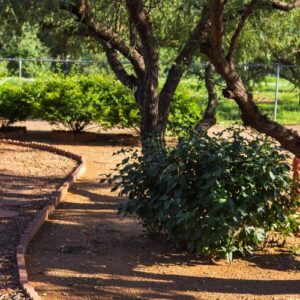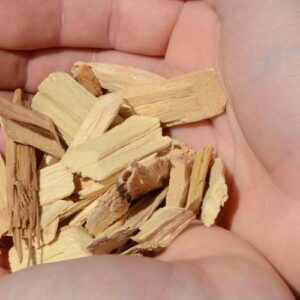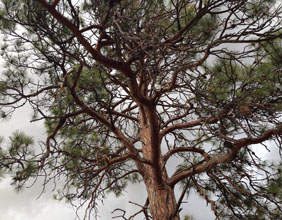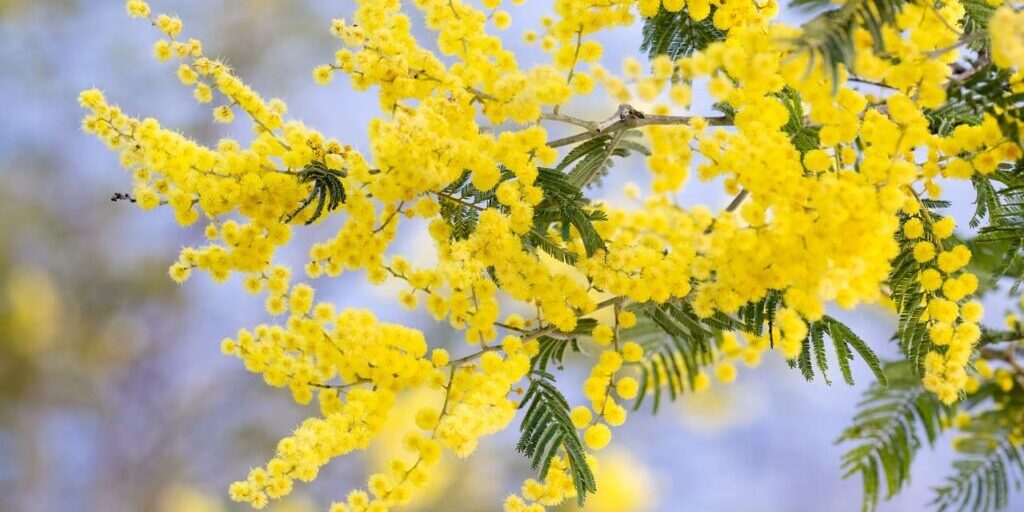
Spring arrives much sooner in Phoenix than it does in other parts of the United States, with wildflowers popping up as early as February and various flowering shrubs showing off bright colors in March and April.
While it’s possible to have something in your Phoenix-area yard bloom almost any time of the year, there’s something special about flowers in spring. Between the colors and the scents, you know that a new season has begun.
If you’d like to add some spring-flowering shrubs or plants to your yard, here are some of our top recommendations. All can be found on the Anthem list of approved plants.
Fairy Duster
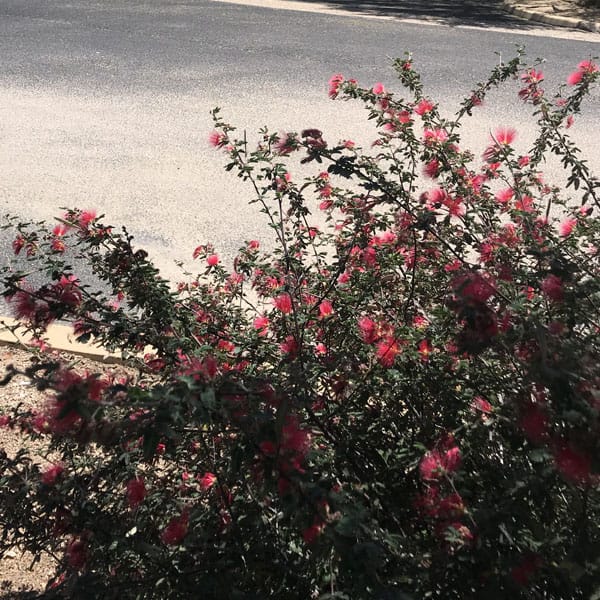
Bring a little magic to your yard with a fairy duster shrub. Evergreen for most of the year, the feathery pink or red flowers appear in late winter through spring. Sometimes they bloom again in fall. The delicate flowers resemble the tip of a paintbrush or a small feather duster
Fairy dusters add a bright spot of color to your yard and attract hummingbirds and butterflies.
These shrubs don’t need a lot of pruning (never shear them!), are rarely damaged by frost, and are drought-tolerant.
For the pink fairy duster, look for callaindra eriophylla. For the Baja red fairy duster, search for calliandra californica.
The pink fairy duster will grow to about 3 feet tall and 4 feet wide, while the Baja red fairy duster can grow to 5 feet tall and 5 feet wide. The pink fairy duster will do best in full sun, but the red one can be planted in full sun or partial sun.
More Fairy Duster info from Water Use it Wisely
More pink Fairy Duster info from ASU
More red Fairy Duster info from ASU
Brittlebrush/Brittlebush (Encelia farinosa)
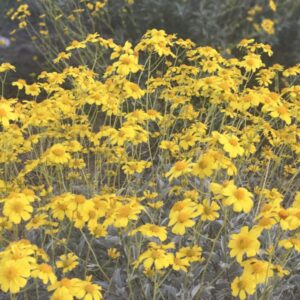
A true native plant of our desert, brittlebrush shrubs are covered in bright yellow, daisy-like flowers throughout the spring months.
While the colorful flowers get all the attention, the fascinating thing is how well-adapted these native plants are to our weather. To thrive in our desert conditions, t they produce two different kinds of leaves. During the winter, they have larger foliage that supports the blooms. But then, when temperatures rise and water is scare, smaller leaves appear. These small leaves are covered with small white hairs that reflect the sun and slow photosynthesis. The lower stems of brittlebush hold in water (like a succulent) to help the plant survive during periods of drought.
With those things in mind, if you add brittlebrush to your yard, be aware that it will look different in the summer than in the winter. Also, make sure not to water too often or you’ll mess with it’s natural growing patterns and could even kill it. It should do just fine with natural rainfall and maybe a few supplemental waterings in the summer if it’s especially dry.
More Brittlebrush info from ASU
Chuparosa (Justica californica)
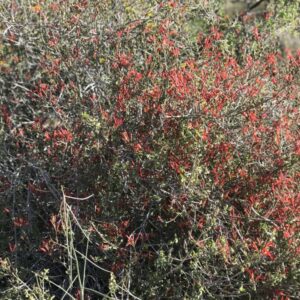 Known to some as the hummingbird’s favorite flower, chuparosa sports reddish-orange tubular flowers. It is native to the Sonoran Desert and will grow to about 3 feet tall and 4 feet wide, sometimes larger.
Known to some as the hummingbird’s favorite flower, chuparosa sports reddish-orange tubular flowers. It is native to the Sonoran Desert and will grow to about 3 feet tall and 4 feet wide, sometimes larger.
The blooms can appear throughout the year. This shrub prefers full sun and is a plant that can even handle reflected sun or being near a wall. It will survive in partial shade but the blooms won’t be as plentiful.
As a semi-succulent plant, it can survive on only 10 inches of moisture a year. However, too much water can be harmful and will decrease blooms.
More Chuparosa info from Water Use it Wisely
Yellow Bells (Tecoma stans)
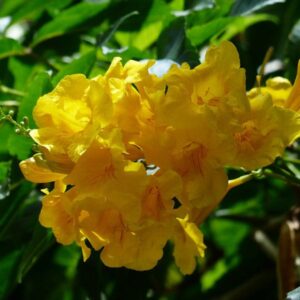
Blooming from April through November (depending on the variety and what kind of year we’ve had), yellow bells are bright, attract pollinators, and create seed pods that provide food for birds in the winter.
The wider leafed variety of yellow bells, Tecoma stans var. stans, can grow into a 25-foot tall tree if pruned in that manner. This tropical plant is native to Central and South America, so may lose some leaves if the winter gets too cold.
Arizona Yellow Bells (Tecoma Stans var. angustata), on the other hand, are native to the Chihuahuan Desert. The leaves are much narrower and it grows to about 10 feet tall and 6 feet wide. It is deciduous and can benefit from rejuvenation pruning from time to time.
Want to find a unique way to show your love of ASU? A yellow bell hybrid called ‘Sparky’ has blooms with a mixture of yellow and maroon, meant to represent the colors of Arizona State University.
If you don’t want more yellow in your yard, Tecoma x ‘Orange Jubilee,’ also known as orange bells, produce bright orange trumpet-shaped flowers in spring instead of the usual yellow. It can grow to 12 feet tall and 8 feet wide.
More Yellow Bells info from Water Use it Wisely
More Yellow Bells info from ASU
Texas Mountain Laurel (Dermatophyllum secundiflorum)
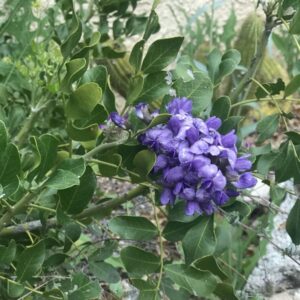
You may be familiar with this plant as the “tree with the purple flowers that smell like grape soda/grape bubble gum,” but it is actually an evergreen shrub that can be pruned or trained into a tree. Every spring, large clusters of purple flowers appear. The deep green, glossy leaves of the Texas mountain laurel are dense, so the shrub or tree can be used as a privacy screen or to block a view. It needs full sun with no shade, so plant it in a spot that gets plenty of sunshine.
If you plan to keep it as a shrub, very little pruning is needed or recommended, as this slow-growing plant takes a long time to recover. In fact, it only blooms on the previous year’s wood. It is drought-tolerant, needs good drainage, and produces seed pods. Note that the seeds inside the seed pods are poisonous, so keep that in mind if animals or children will be nearby.
More Texas Mountain Laurel info from Water Use it Wisely
More Texas Mountain Laurel info from ASU
Ready to Start Planting?
There are dozens of other shrubs that you could choose to plant in your yard, it all depends on what you’re looking for, what kind of sunlight you get, the drainage, and more. We hope that the few we highlighted today have inspired you to add some color to your yard this spring. Plus, you may attract some beautiful hummingbirds as a result!
Contact us at Titan Tree Care if you have questions about any plants, shrubs, or trees, or if you need any landscape work done on your yard. We’re happy to help you choose the best options for your property and ensure that they’re planted and cared for properly.
See Our Latest Articles
More Articles Like This

Titan Tree Care is a full-service tree care company located in Anthem, AZ and serving all of North Phoenix. We offer a wide range of services to meet your tree care needs, including tree and palm trimming, tree pruning, tree removal, stump grinding, and more. We also offer insect or disease treatments and fertilization services. We are dedicated to providing high-quality, safe, and effective tree care services to our customers and work hard to ensure that your trees are healthy and look their best.






